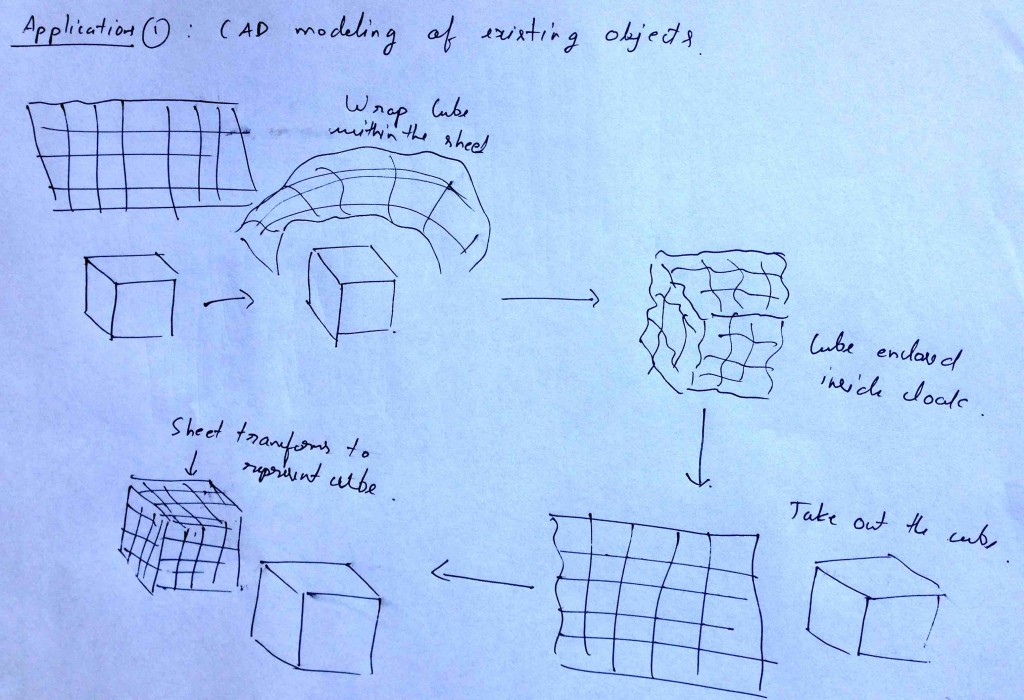Magic blanket is a fabric inspired by how “weak strands” transform to “stiff structure” upon weaving. It is a material which not only has programmable stiffness, but it also has memory of different states. An example application of magic blanket would be 3D scanning/capturing existing objects. As seen in the image above, a cube is engulfed completely inside the magic blanket. After the blanket is removed, the blanket takes the shape of the cube on the flip of a switch. A possible use case for such a blanket would be its use as a mold for casting.
Interaction paradigm
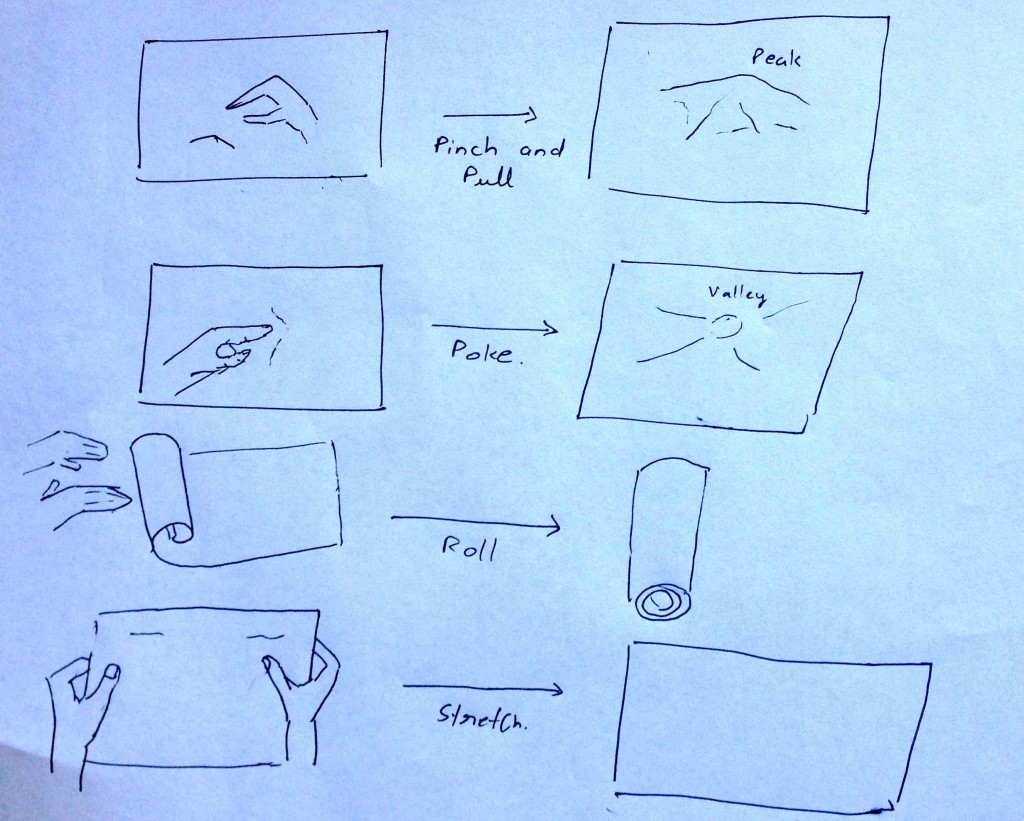

Inspiration
Magic blanket is inspired by one of my experiments: In India, coconut leaves are available almost ubiquitously. This inexpensive natural material can be woven into a fabric, which can eventually be used for construction purposes etc.
Programmable rigidity/stiffness

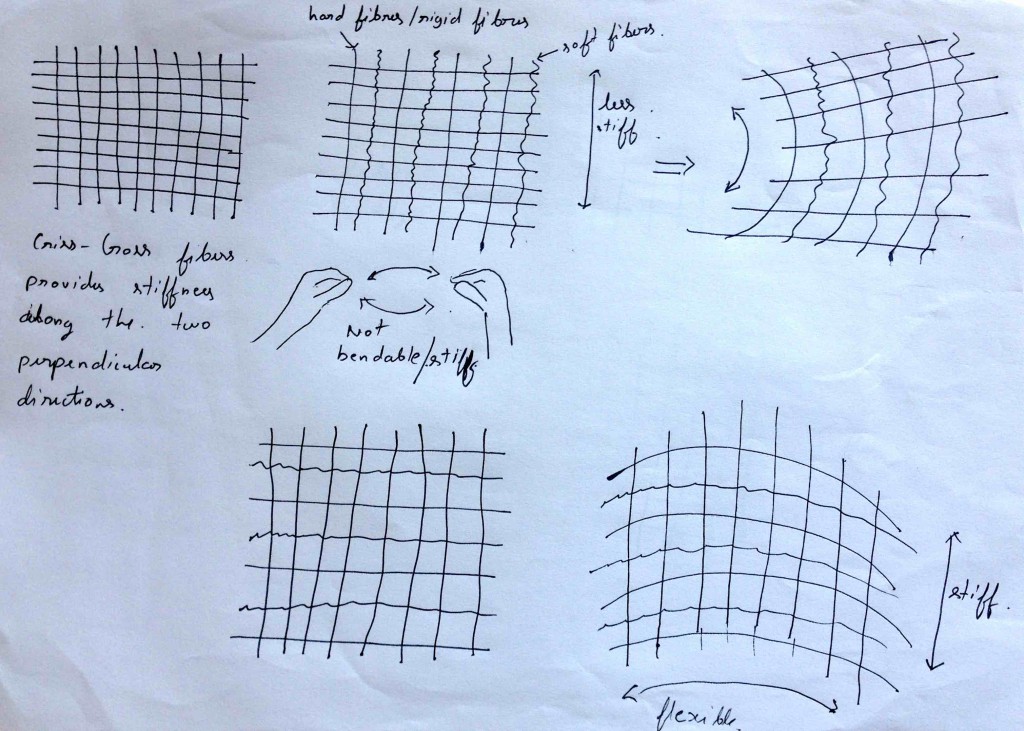
By selectively making some of the strands weak, it is possible to change the physical properties of the fabric (stiffness, hinging, creasing). The density of the soft strands and the order of arrangement of the soft and the hard strands determine the stiffness of the fabric. By selectively making some of the strands soft, it is possible to produces hinges and creases along the fabric surface. The fabric’s malleability can be programmed such that it can be bent and twisted horizontally, while retaining stiffness along vertical direction and vice-versa.
Fabrication by 3D printing (Metamaterials)
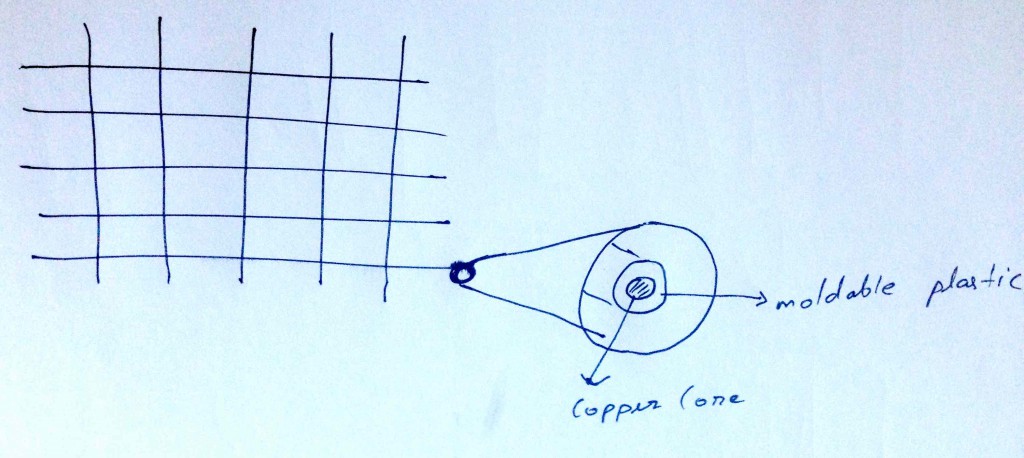
The key idea is to embed a metal filament into the moldable plastic filament and hence the softness of each strand can then be programmed by controlling the temperature of the heating element core.
Other possibilities: Pull and expand
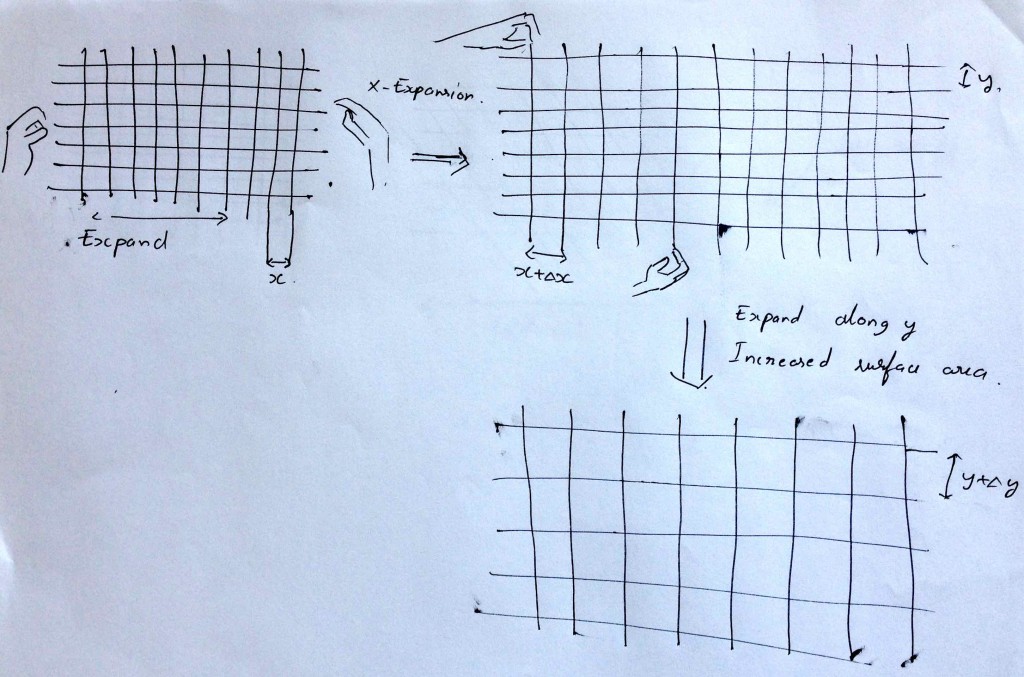
Other possibilities: Crease and fold

Other possibilities: Motion like in a caterpillar

Changing stiffness by chaining orientation of strands
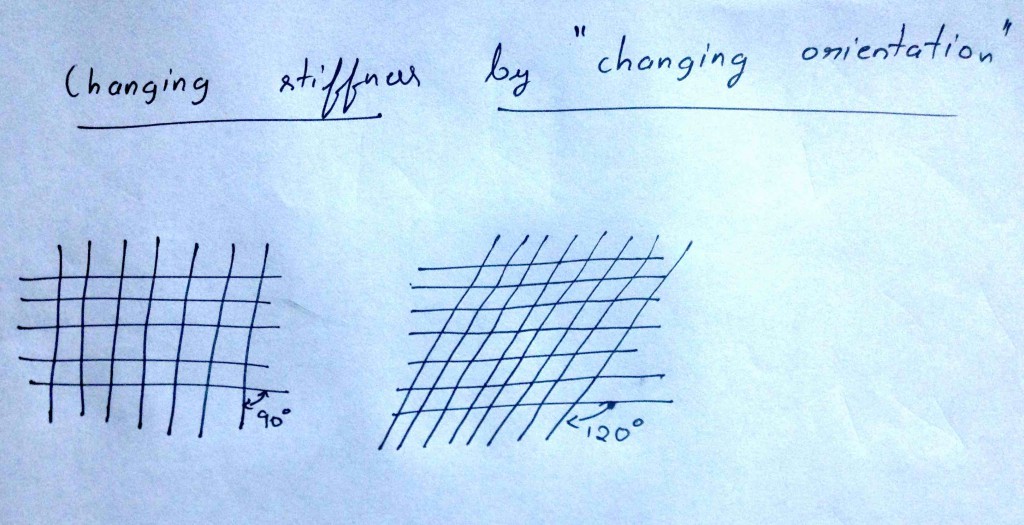
Experiments
<Two pictures illustrating primitive experiments>


